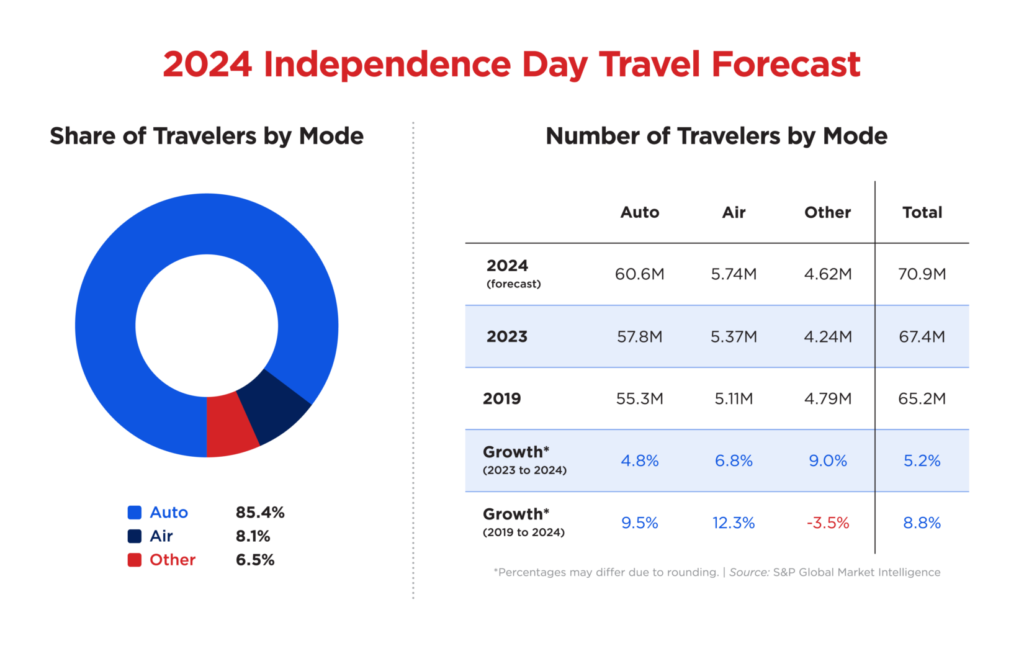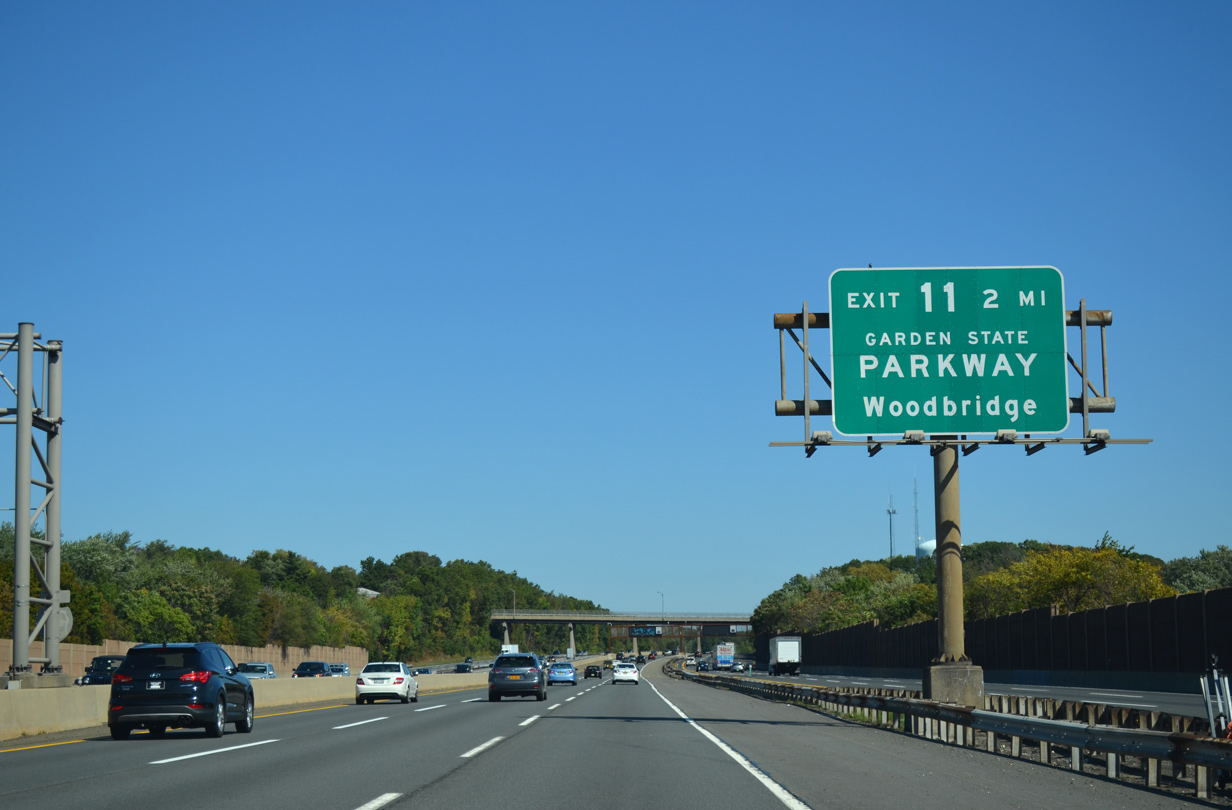Motor club AAA projects that 70.9 million travelers will head 50 miles or more from home over the 2024 Independence Day holiday, the nine-day period from June 29 to July 7. An estimated record of 60.6 million people are expected to travel by car over Independence Day week –– 2.8 million more travelers than last year.
Historically, the Independence Day holiday period included only one weekend. For the first time, AAA looked at the entire July 4th week, plus the Saturday before and the Sunday after the holiday. This year’s projected number of travelers for that period is a 5% increase compared to 2023 and an 8% increase over 2019.
“With summer vacations in full swing and the flexibility of remote work, more Americans are taking extended trips around Independence Day,” said Paula Twidale, Senior Vice President of AAA Travel. “We anticipate this July 4th week will be the busiest ever with an additional 5.7 million people traveling compared to 2019.”

This year’s number also surpasses 2019 when 55.3 million people traveled by car over July 4th week. Gas prices are lower than last year when the national average was $3.53. Pump prices will likely continue going down leading up to Independence Day. At that point, they will likely level off and remain relatively stable until after Labor Day, similar to last year.
An important caveat is hurricane season – underway now – which could affect gas prices should a storm negatively impact Gulf Coast oil production and refining centers.
The number of air travelers is also expected to set a new record. AAA projects 5.74 million people will fly to their July 4th destinations. That’s an increase of nearly 7% compared to last year and a 12% increase over 2019. AAA booking data shows domestic airfare is 2% cheaper this Independence Day week compared to last year, and the average price for a domestic roundtrip ticket is $800.
Airports will be packed throughout the week. AAA recommends arriving 2 hours early, reserving parking ahead of time, and traveling with carry-on luggage versus checked bags to save time and money.
More than 4.6 million people are expected to travel by other modes of transportation, including buses, cruises, and trains. This category is seeing an increase of 9% compared to last year, but this year’s number is shy of 2019’s figure of 4.79 million.
Best/Worst Times to Drive and Peak Congestion by Metro
INRIX, a provider of transportation data and insights, says the worst times to travel by car before and on July 4th are between 2pm and 7pm. Drivers should hit the road in the morning, and travelers returning on Monday, July 8th should avoid rush hour traffic in the morning and afternoon.
“Drivers in large metro areas can expect the worst traffic delays on Wednesday, July 3rd, as they leave town, and Sunday, July 7th, as they return,” said Bob Pishue, transportation analyst at INRIX. “Road trips over the holiday week could take up to 67% longer than normal. Travelers should monitor 511 services, local news stations, and traffic apps for up-to-the-minute road conditions.”
Please note that the times listed below are for the time zone in which the metro is located. For example, Atlanta routes = ET and Los Angeles routes = PT.
| Best and Worst Times to Travel by Car | ||
| Date | Worst Travel Time | Best Travel Time |
| Monday, Jul 1 | Minimal Traffic Impact Expected | |
| Tuesday, Jul 2 | 2:00 – 6:00 PM | After 7:00 PM |
| Wednesday, Jul 3 | 2:00 – 7:00 PM | Before Noon |
| Thursday, Jul 4 | 2:00 – 7:00 PM | Before Noon |
| Friday, Jul 5 | 11:00 AM – 4:00 PM | Before 10:00 AM |
| Saturday, Jul 6 | 10:30 AM – 2:30 PM | Before 10:00 AM |
| Sunday, Jul 7 | 2:00 – 8:00 PM | Before 11:00 AM |
| Monday, Jul 8 | 1:00 – 5:00 PM | After 7:00 PM |
Source: INRIX













